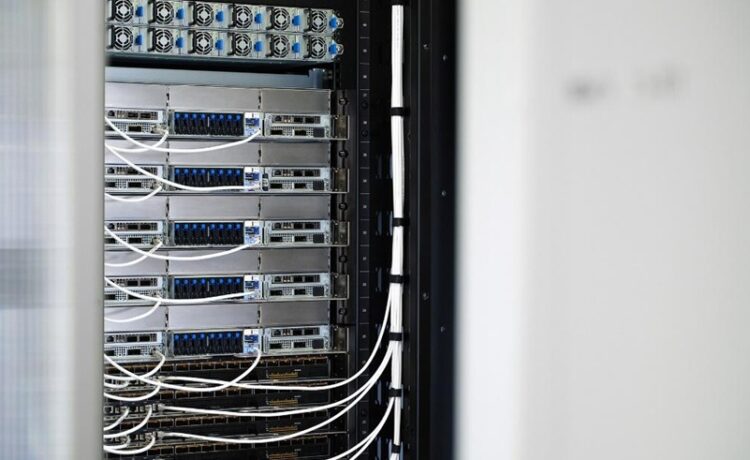Copackaged optics represents a fundamental shift in how data centres handle the relentless surge of information flowing through modern networks. As bandwidth demands accelerate beyond what traditional architectures can sustain, this integration technology positions optical components directly alongside switching silicon, eliminating bottlenecks that have long constrained cloud infrastructure. The result is not merely incremental improvement but a transformation in how hyperscale facilities and enterprise networks approach connectivity at the physical layer.
Walk into any major data centre today and you witness an intricate choreography of information. Racks humming with servers, cables snaking through raised floors, cooling systems working overtime to manage heat loads. Yet beneath this visible infrastructure lies a more fundamental constraint: the physical distance between optical transceivers and the switching chips that route data. Traditional pluggable optics, mounted in cages on faceplate panels, introduce latency and power inefficiencies that compound as networks scale. Copackaged optics addresses this reality by bringing these components into intimate proximity, mounted directly on the switch package itself.
The Technical Foundation
The architecture rests on a straightforward premise. By copackaging optical engines with application-specific integrated circuits (ASICs), engineers eliminate the electrical interconnects that previously spanned circuit boards. These traces, measured in centimetres or more in conventional designs, consume power and introduce signal degradation. When you remove them, several advantages emerge:
Reduced power consumption
Shorter electrical paths mean less energy lost to resistance and fewer components needed for signal conditioning. Early implementations demonstrate power savings of 30 to 50 per cent compared to pluggable alternatives at equivalent bandwidths.
Higher bandwidth density
Copackaged designs enable more optical connections per unit area, supporting the terabit-scale switching capacities that next-generation networks demand.
Lower latency
Direct integration cuts nanoseconds from signal paths. In environments where microseconds matter, these savings accumulate across millions of transactions.
Improved thermal management
Consolidated packaging allows more efficient heat dissipation strategies, addressing a persistent challenge as port speeds climb toward 800 gigabits per second and beyond.
Singapore has emerged as a significant hub for advancing copackaged optics development and deployment. The nation’s strategic position in global data centre infrastructure, combined with substantial investments in photonics research, positions it at the forefront of this transition. As one industry observer noted, “Singapore’s copackaged optics initiatives demonstrate how focused policy and technical expertise can accelerate adoption of transformative technologies.”
Real-World Applications
The implications extend beyond technical specifications into tangible operational concerns. Consider the hyperscale operators managing millions of servers across continental networks. For them, each watt saved translates to reduced cooling requirements, smaller power infrastructure, and ultimately lower costs at massive scale. When a single large facility might house 100,000 servers or more, efficiency gains multiply rapidly.
Artificial intelligence workloads intensify these demands. Training large language models or processing real-time inference requires moving enormous datasets between compute nodes. Traditional network architectures struggle under this load, creating bottlenecks that limit what machine learning systems can achieve. Copackaged optics provides the bandwidth headroom these applications require, enabling clusters to scale without network constraints dictating design choices.
Enterprise networks face parallel challenges. As organisations migrate workloads to cloud platforms and adopt hybrid infrastructure models, the data travelling between on-premises facilities and public cloud regions grows exponentially. Wide-area networks built on copackaged optical solutions offer the capacity and efficiency to support these patterns without forcing compromises in application performance or user experience.
Implementation Considerations
Transitioning to copackaged architectures requires addressing several practical concerns. The technology demands different manufacturing processes, supply chain relationships, and operational procedures compared to pluggable optics. Standardisation efforts continue to evolve, with industry consortia working to establish interoperability frameworks that prevent vendor lock-in.
Thermal management deserves particular attention. Placing high-power optical components directly on switch packages concentrates heat in ways that demand sophisticated cooling solutions. Advanced liquid cooling systems and improved thermal interface materials become essential rather than optional.
The economics present their own complexity. Initial capital costs for copackaged systems may exceed traditional alternatives, though lifecycle analysis often reveals lower total cost of ownership through energy savings and increased port density. Organisations must evaluate their specific requirements, growth trajectories, and existing infrastructure when making adoption decisions.
Looking Forward
Network architects and data centre operators increasingly recognise that pluggable optics, while serving the industry well for decades, cannot meet future bandwidth requirements at acceptable power and cost points. The physics of electrical signalling imposes fundamental limits that integration helps overcome. As switch ASICs evolve toward 51.2 terabit and higher capacities, copackaged approaches become not merely advantageous but necessary.
The transformation unfolds gradually, not as a sudden revolution. Early adopters deploy copackaged systems for specific high-bandwidth applications while maintaining pluggable infrastructure elsewhere. Over time, as manufacturing scales and standards mature, the technology will likely become standard practice for new installations. This measured adoption allows the ecosystem to adapt while managing risk.
For organisations planning network infrastructure today, understanding Copackaged optics capabilities and limitations informs strategic decisions that will shape operational capabilities for years ahead. The technology represents a genuine advancement in how we build the physical networks underpinning digital services, offering a path toward handling growth that seemed insurmountable with previous approaches. As demands continue their upward trajectory, copackaged optics provides the foundation for networks that can scale to meet them.

